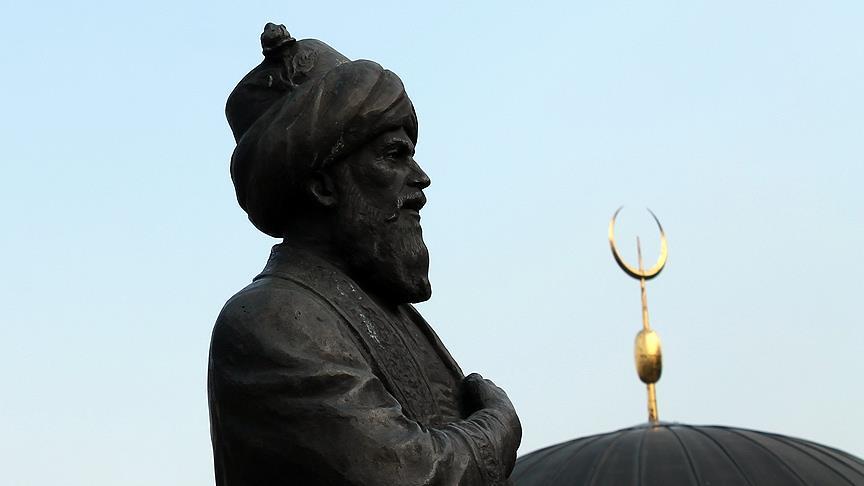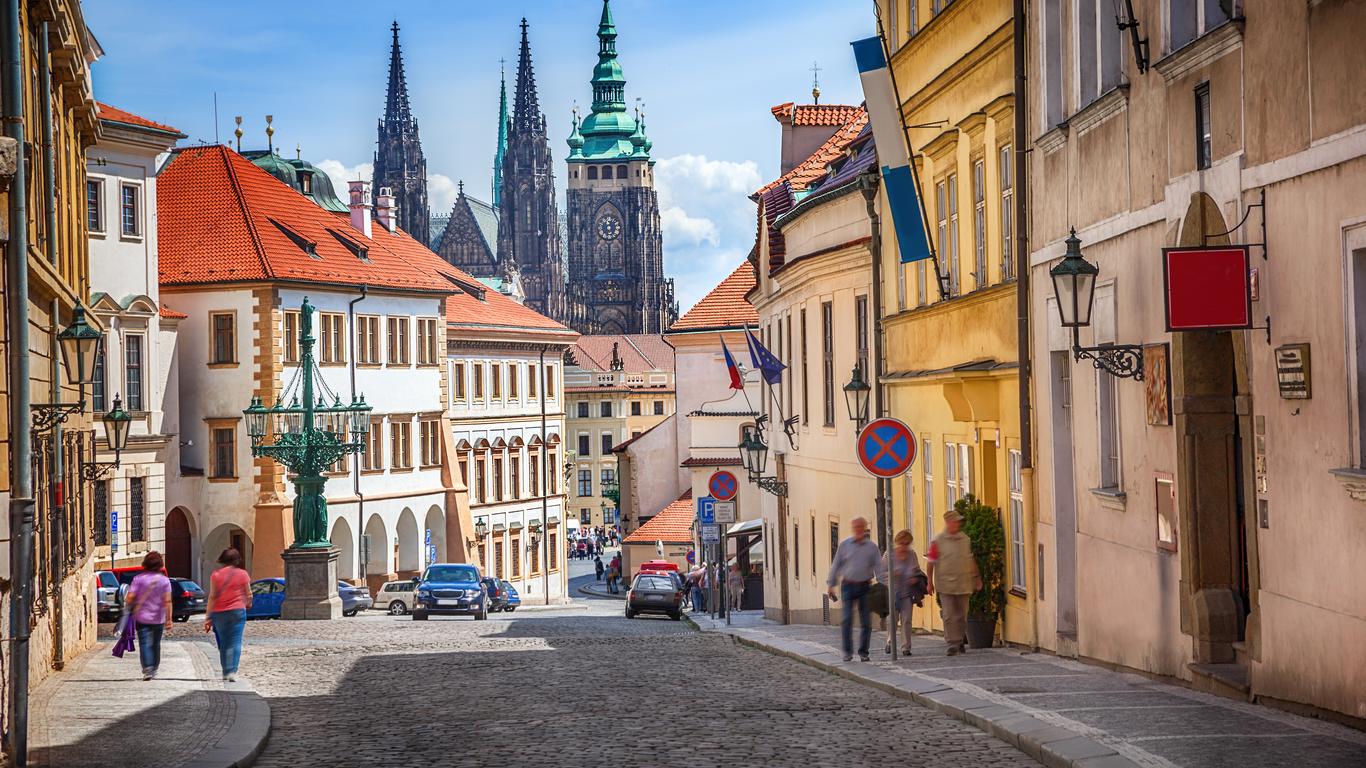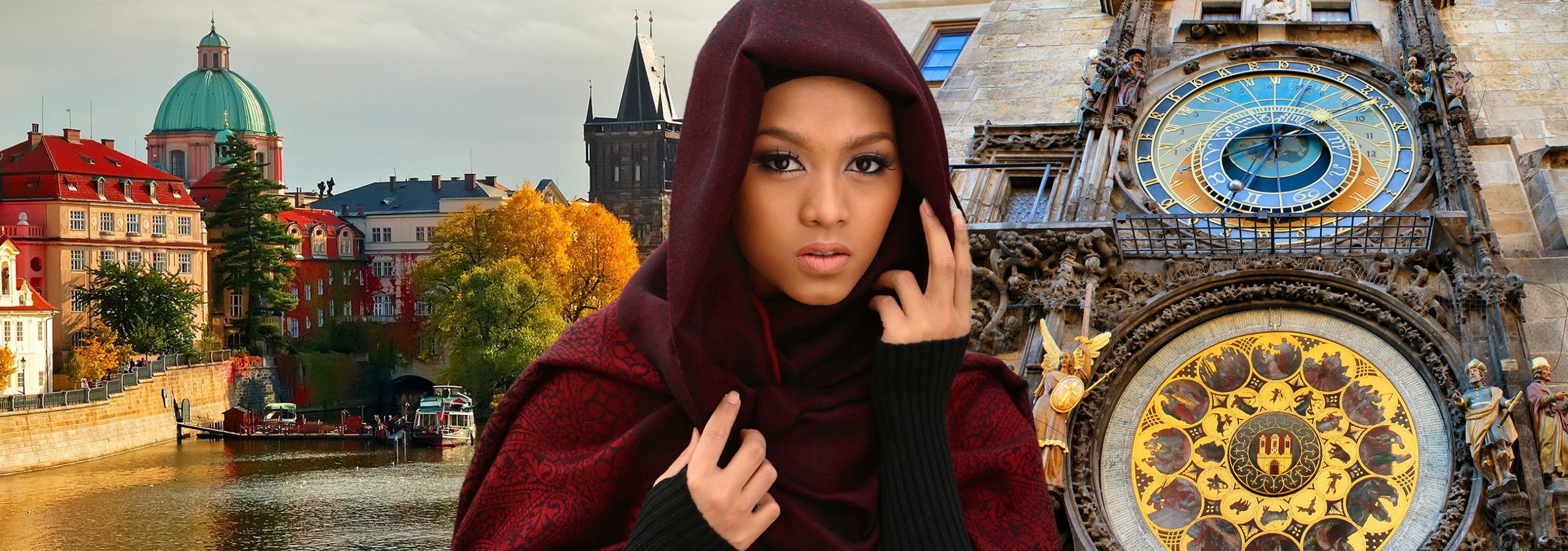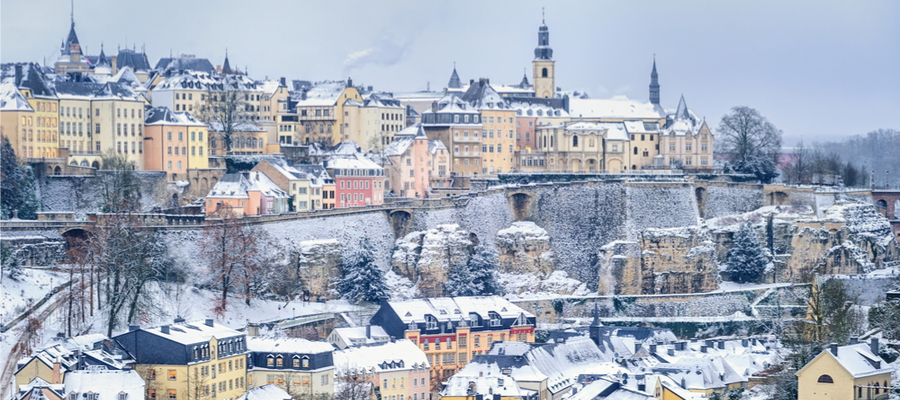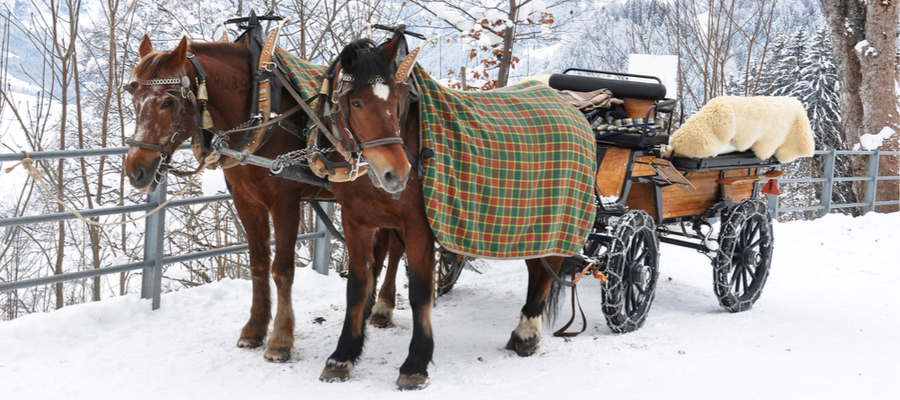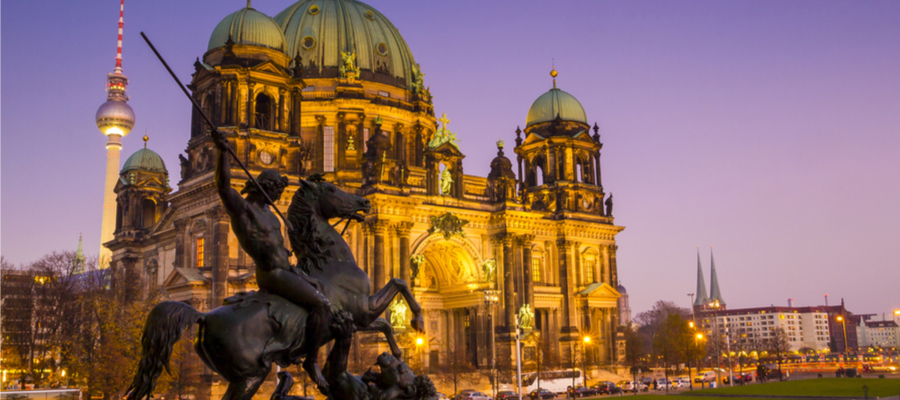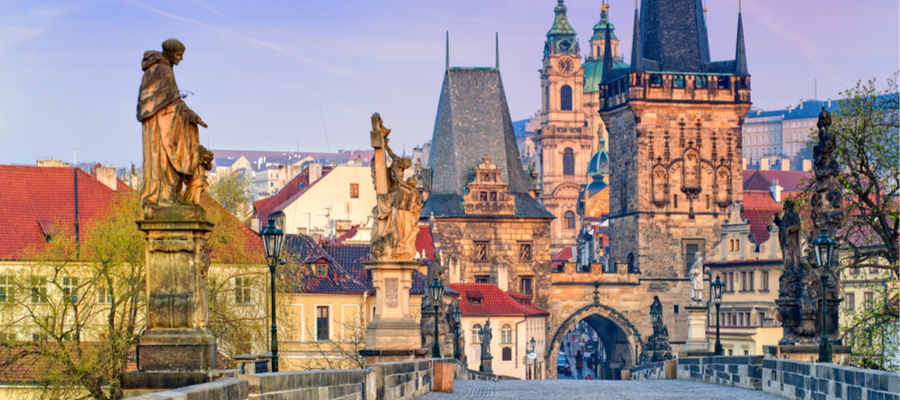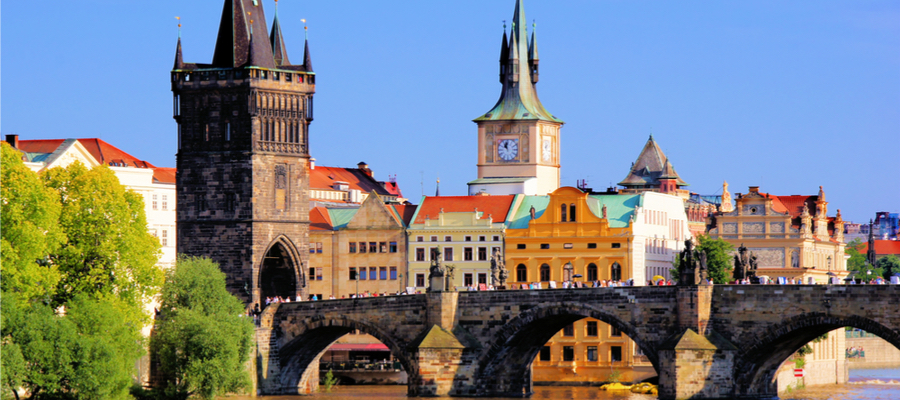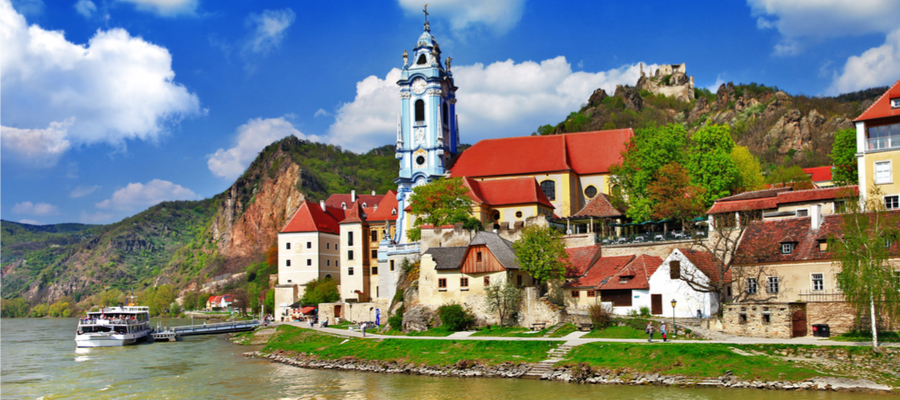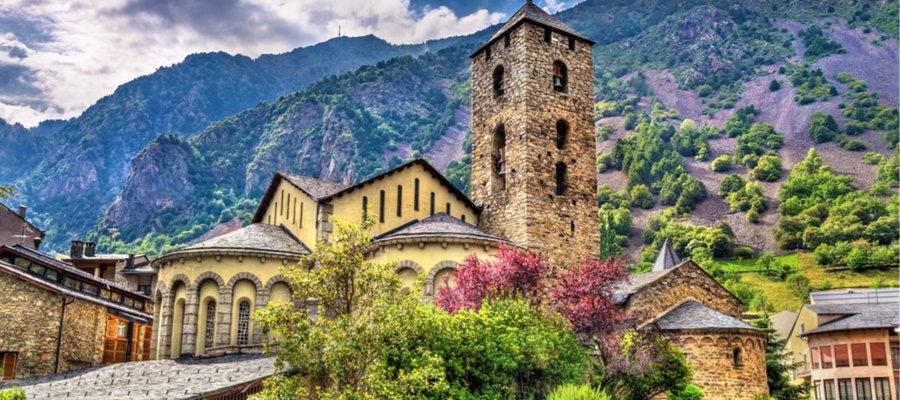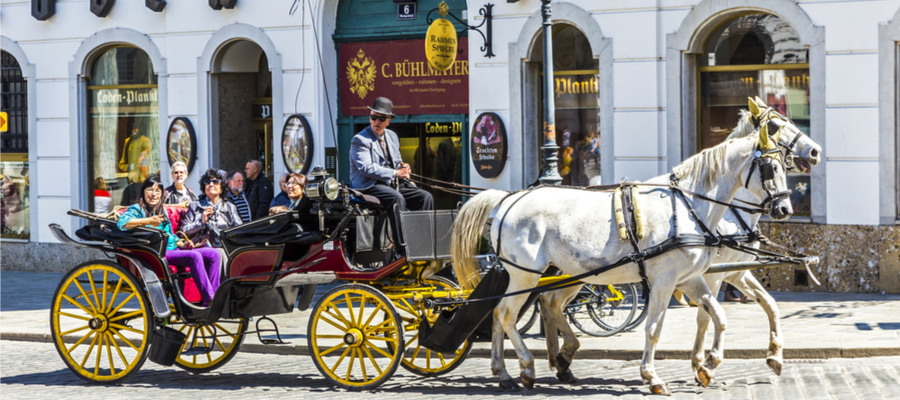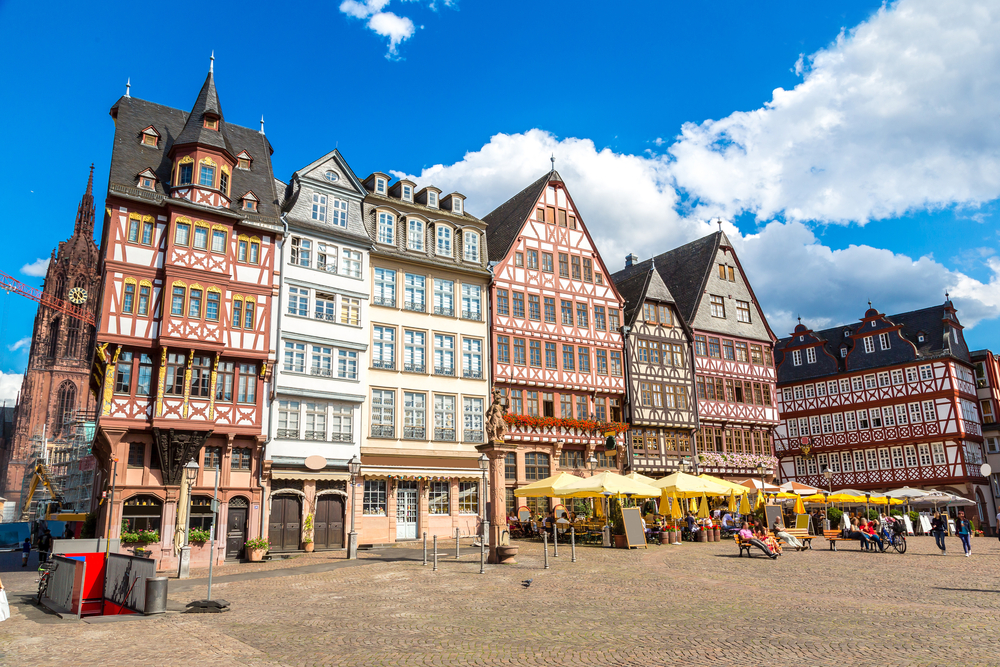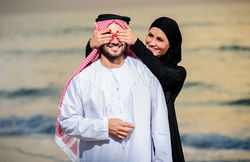Full Itinerary
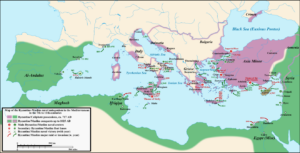
ITINERARY : THE ISLAMIC EMIRATE OF HUNGARY & EASTERN EUROPE – 7 Days & 6 Nights
“ THE DISCOVERY OF THE ISLAMIC SOUL AND HERITAGE OF ISLAMIC HUNGARY & EASTERN EUROPE “
SPIRITUAL HERITAGE TOUR TO ISLAMIC HUNGARY & EASTERN EUROPE
” WORLD ISLAMIC HERITAGE TAKES YOU BACK
THROUGHOUT HISTORY TO DISCOVER THE SECRET SPIRITUAL ISLAMIC HERITAGE OF HUNGARY & EASTERN EUROPE “
DAY 1 PRAGUE AIRPORT – PRAGUE
Meals : Exclusive Halal Half-board arrangements.
Sightseeing : After arrival at Prague International Airport we will start our journey throughout the beautiful scenery of Prague – Tour visits to the most popular sightseeings of Prague ; Panoramic Tour of Prague – Old Town Square – Prague Astronomical Clock, Prague Castle, St. Vitus Cathedral, MunicipalHouse, The Church of Our Lady before Týn, The Grand Mosque of Prague – There are an estimated 20,000 Muslims in the Czech Republic, representing 0.2% of the country’s population. The growing Turkish community forms the largest Muslim population in the country.
According to the 2010 census, there are around 3500 Muslims in the Czech Republic (less than 0.1% of the country’s population), compared to 495 in 1991.
In the Czech Republic, there are three mosques in Prague, Brno and one Mosque in Karlovy Vary.
However The first documented visit of a person with knowledge of Islam was made (964-965) by Íbrahím ibn Jaqúb, a Jewish merchant from then-Muslim Spain. His memoirs were later published to become one of the first accounts about Central Europe in the Islamic world.
During both sieges of Vienna, reconnaissance groups of Ottoman armies reached Moravia. Strong trade links between Austria-Hungary and the Ottoman Empire emerged during the 19th century. Individual Muslims from the late 19th century began to settle in Czech lands after Bosnia became part of the Austro-Hungarian empire.
Traditionally, the influence of Islam on the culture of Czech lands has been small, A law 1912 by the Austro-Hungarian monarchy recognised Islam as a “state religion” and officially allowed its presence in what is now the Czech Republic. The first community (Muslimské náboženské obce pro Československo) was established in 1934 and disbanded in 1949.
An attempt to set up a new community in 1968 failed. In 1991, the Center of Muslim communities (Czech: Ústředí muslimských náboženských obcí) was established. In 1998 the first Mosque was opened, in Brno and a year later another, in the capital, Prague. Attempts to open mosques in other cities have been stopped by local citizens. In 2004 Islam was officially registered in the Czech Republic: the community is thus eligible to obtain funds from the state.
The largest Muslim community is of Turkish origin. Other Muslims have also come from Bosnia-Herzegovina (early 1990s), Kosovo (late 1990s) and former countries of Soviet Union (mostly from Caucasus region, from the late 1990s until the present). A significant and influential part are the middle-class people of Egyptian, Syrian and other Middle Eastern ancestries (typically those who studied in Czechoslovakia and decided to stay). A few hundred Muslims are Czech converts. A beautiful visit to this Lost Islamic Kingdom rich of Islamic History and Muslim roots – Dinner & Overnight in Prague.
DAY 2 PRAGUE
Meals : Exclusive Halal Half-board arrangements.
Sightseeing : This Morning we will bring a visit to the beautiful” Kutna Hora “, It’s one of the 12 places in the Czech Republic on UNESCO’s world heritage list but is most famous for its remarkable ‘bone church’; a cemetery chapel decorated with the bones of up to 40,000 people.Visit the gothic Cathedral of St Barbara. After this visit we will experience Prague’s unique beauty and the soul of the city – to look down from these towers and admire the unusual bird’s-eye view of the historical squares, red tiled roofs, and the Vltava River with its many bridges and long waterfront.
The towers, which were not a part of the individual churches and thus owned by the church, were, for the most part, the property of the town or municipality. They were a part of the fortifications and used as guard towers that were locked for the night. Quite often they were used by the town criers to make announcements. For example, trumpets and signals visible at a great distance were used to notify citizens of a fire and its location as conflagrations were very common in towns in the past. Many towers were equipped with bells ringing out the time of day, some served as a customs house at the entrance to the town, and yet others were used for storage.
A different incomparable view can be seen from the tower of the Old Town Hall, which was originally the seat of the Old Town administration. The core of the complex consists of the oldest building built in Gothic style and with a richly decorated portal. A massive square tower with a height of 66 metres was added during the 14th century. The astronomical clock “Orloj” was installed in it at a later date and it is one of Prague’s most famous towers. On the first floor of the tower there is a chapel with a richly ornamented bay window that looks into the chamber housing the twelve colourful carved figures of the apostles, who appear every hour in the two windows. The movement of the apostles also activates the figures along the sides of the clock – a skeleton representing Death, a Turk representing the Infidel, the Miser, a figure representing Vanity and a rooster. At the bottom of the clock there is a calendar board with the signs of the zodiac which is the work of the famous painter Josef Manes. On the corner of the bay window there is a copy of the remarkable Gothic statue from the late 14th century, which is known as the Old Town Madonna.- Free afternoon for Leisure & Shopping & pleasure at the Old Historical city of Prague – Overnight in Prague.
DAY 3 PRAGUE – BRATISLAVA
Meals : Exclusive Halal Half-board arrangements.
Sightseeing : After breakfast panoramic Tour through the beautiful South Eastern European landscapes of South Cechia to Slovakia..to the Immense beautiful city of ” Bratislava ” … . Panoramic tour of Bratislava’s (Old Town), and St.Michael’s Gate is our entrance to the older quarters in front of the beautiful City Hall .a beautiful panoramic sight tour of this beautiful Historical City ..Decades after the Hungarian defeat of Mohacs (1526) Turkish troops controlled Štúrovo (Párkány) and other parts of today’s southern central Slovakia and encouraged the Protestant Christian groups while Habsburg Austrian troops occupied and recatholized the northern and western parts. Later on the Turks seized some further territories in southern central Slovakia and pillaged territories up to Nitra. Finally, however, when the Turks lost the Battle of Vienna and the Ottoman vassal Emeric Thököly was defeated in Slovakia, between 1687 and 1699 Turkish Ottoman rule in Hungary was finally broken.
Afterwards we continue our journey to bring a visit to the only Mosque in Slovakia meeting with local Muslim Community and meet and greet with the community The “ Islamic Center of Cordoba (Kultúrne Centrum Córdoba), “ is located down the Obchodná street, Bratislava. It is the only place of Muslim worship in the country under Islamic foundation in Slovakia. Even though it is an unofficial Mosque, it is open every day of the year for all daily prayers except the Fajr prayer. Friday sermons are held in Arabic, English, and Slovakia City Tour of Bratislava to the old city and main attractions of Bratislava .
Islamic Center of Cordoba is not very big, but it is enough to hold congregation prayers of about 80 to 100 people. There is a wooden podium that is used for Friday sermons, but there is no decoration with elaborated patterns as found in common mosques. The Kultúrne Centrum Córdoba has tried to attain an official mosque permit from the government, but had its proposal rejected.
On February 19, 2020, the Indonesian Embassy in Bratislava in collaboration with the Islamic centre in Slovakia and the Forum of the World’s Religion in Slovakia held an interfaith dialogue with the theme “The Role of Interfaith in Advancing Sustainable World Peace” by Imam Shamsi Ali from the Islamic centre in New York, America.
The goal of this interfaith dialogue was to bring the basic mission of Islam, namely peace and the challenge of tolerance in religious life, to the academics, mass media and Slovak citizens.
The Indonesian Ambassador to Slovakia, Adiyatwidi Adiwoso in her remarks stated that Indonesia as the largest Muslim population country in the world strongly emphasizes the values of diversity, tolerance, and harmony that are reflected in the slogan “Unity in Diversity”. Islam in Indonesia can be a role model in creating a religious life that is harmonious and tolerant. Therefore, Indonesia has an interest in efforts to encourage the achievement of harmony among civilization through interfaith dialogue. The Indonesian Ambassador also expressed her appreciation for the positive responses from the audience and various religious representatives who are creating better interfaith relations during everyday life.
Imam Shamsi Ali in his presentation emphasized that religion is very important in our life and every religion has the same basic principles. He also shared his experience in developing a tolerant life in America. During that, he experienced some challenges from non-Muslims. However, as a Muslim, he teaches about good and true Islam. He hoped that this interfaith dialogue would provide to the Westerners that Islam is not followed just in Arabic religion, which has generally a negative connotation. Thus, perceptions that have developed in the Western world must change.
Director of the Islamic centre, Imam Moh. Sahwan Hasna expressed his gratitude for the initiative and invitation to the Indonesian Ambassador to cooperate in organizing this activity. According to him, interfaith dialogue is an important thing because we can see and get different perspectives from each religion. Interfaith dialogue activities are not intended to invite people to change their religion or to compare which religion is better. However, to get mutual understanding and mutual respect.
The invitees conveyed various responses. Former Minister of International Relations of the Slovak Republic, Mr. Pavol Demes expressed his positive appreciation and encouraged further activities in wider circles such as academics and other non-Muslim institutions. While a priest from Slovakia said that Christianity in Slovakia is sometimes misused by certain political parties and ultimately harming minority groups. Therefore, this activity has a positive effort for all parties in Slovakia to create a religious life that is mutually respectful and harmonious in various aspects of life.
On a different occasion, Director of the Islamic centre, Imam Moh. Sahwan Hasna accompanied ambassador of Indonesia and Imam Shamsi Ali to see a very old manuscript of the Quran in the University Library in Bratislava. The manuscript is the study of classical scholars such as Al-Ghazali, Al-Farabi, and others. The books and writings of the Koran were written around the 4-7 century in Hijrah..- Free afternoon for Leisure & Shopping & pleasure at the Old Historical city of Bratislava – Overnight in Bratislava.
DAY 4 BRATISLAVA – BUDAPEST
Meals : Exclusive Halal Half-board arrangements.
Sightseeing : After breakfast we will depart to Hungary , the capital and the Romantic most Historical European City “
Budapest “Budapest- Today we gone have a visit to the beautiful capital city of “Budapest “ we gone enjoy during our stay a visit to the old Historical square and inner Old city , we will enjoy the beautiful panoramic sights and mountain heights and breathtaking views of Castles and bastions and the richness of this immense beautiful city, such us ; Fisherman’s Bastion – Széchenyi Chain Bridge – Buda Castle, – Budapest Parliamentary building – The world famous KARAVAN is a popular street food market serving food from all over the world – and many other sights , In the old form of the Hungarian language, Muslims were called Böszörmény, cognates with Turkish Bozulmamış, which in turn descends from Arabic: مسلم, Muslim, a term preserved as both a family name, and as that of the town Hajdúböszörmény.
The first Islamic author to speak of this Muslim community was Yaqut al-Hamawi (575-626 AH/1179-1229 CE), he writes about a famous Hungarian student who studied in Aleppo, according to the student there were 30 Muslim villages in Hungary. Yaqut writes in his famous geographical dictionary, “Mu’ajam al-Buldan”, about his meeting with a Hungarian Muslim youth in Syria who was studying Islam and and there and brought some details of the history and life of their people in Hungary. The Andalusian Muslim traveler Abu Hamid al Garnati wrote of two types of Muslims in Hungary, the first being the Böszörmény of the Carpathian Basin and Volga Bulgars (Khwarezmians).
Today we will visit the tomb “ Maqaam “ of “ Gül Baba “ Gül Baba‘s tomb (türbe) in Budapest, Hungary, is the northernmost Islamic pilgrimage site in the world. The mausoleum is located in the district of Rózsadomb on Mecset (mosque) Street, a short but steep walk from Margaret Bridge. Gül Baba (died 1541), also known as Jafer, was an Ottoman Bektashi dervish poet and companion of Sultan Suleiman the Magnificent who took part in a number of campaigns in Europe from the reign of Mehmed II onwards. A native of Merzifon (Marsiwān, in the vilāyet of Sivas, Anatolia),[1] he was the son of Kutb’ül Arifin Veli’üddin İbn Yalınkılıç. In Hungary, Gül Baba is known as the “Father of Roses,” a literal translation of the meaning of his names in Turkish; he is said to have introduced the flower to the country. the metaphorical meaning of the Turkish name, which referred to the dervish’s status derived from his deep mystical knowledge of Allah. Gül Baba is thought to have died in Buda during the first Muslim religious ceremony held after the Ottoman victory of 1541, or alternatively to have been killed during fighting below the walls of the city on August 21, 1541. Suleiman, who was also Caliph, declared him patron saint of the city and is reputed to have been one of the coffin bearers. Gül Baba’s descendants are the Marzioglu family, some of whom were the pashas of the Trebizond Vilayet. – A beautiful visit to this Lost Islamic Kingdom rich of Islamic History and Muslim roots – Free Afternoon for Shopping & Leisure Dinner & Overnight in Budapest.
DAY 5 BUDAPEST – PESCE – BUDAPEST
Meals : Exclusive Halal Half-board arrangements.
Sightseeing : After breakfast we will continue our Journey with a beautiful visit to the Islamic Southern Historical city of Pesce…After the Battle of Mohács (1526) in which the invading Ottoman army defeated the armies of King Louis II, the armies of Suleiman occupied Pécs. Not only was a large part of the country occupied by Ottomans, the public opinion of who should be the king of Hungary was divided, too. One party supported Ferdinand of Habsburg, the other party crowned John Zápolya in Székesfehérvár. The citizens of Pécs supported Emperor Ferdinand, but the rest of Baranya county supported King John. In the summer of 1527 Ferdinand defeated the armies of Szapolyai and was crowned king on November 3. Ferdinand favoured the city because of their support, and exempted Pécs from paying taxes. Pécs was rebuilt and fortified.
In 1529, the Ottomans captured Pécs again, and went on a campaign against Vienna. The Ottomans forced Pécs to accept King John (who was allied with them) as their ruler. John died in 1540. In 1541, the Ottomans occupied the castle of Buda, and ordered Isabella, the widow of John to give Pécs to them, since the city was of strategic importance. The citizens of Pécs defended the city against the Ottomans, and swore loyalty to Ferdinand. The emperor helped the city and defended it from further Ottoman attacks, but his advisers persuaded him into focusing more on the cities of Székesfehérvár and Esztergom instead of Pécs. Pécs was preparing for the siege, but a day before, Flemish and Walloon mercenaries fled from the city, and raided the nearby lands. The next day in June 1543 the Bishop himself went to the Ottomans with the keys of the city.
After occupying the city, the Ottomans fortified it and turned it into a real Ottoman city. The Christian churches were turned into Mosques; Turkish baths and Minarets were built, Qur’an schools were founded, there was a bazaar in place of the market. For a hundred years the city was an island of peace in a land of war. It was a sanjak centre in Budin Eyalet at first and Kanije Eyalet later as “Peçuy”.
The Ottoman era resulted in numerous landmarks, such as the Mosque of Pasha Qasim the Victorious ” Sultan Al Qasim Annaser ” on Széchenyi square, the Tomb of İdris Baba, and the Yakovalı Hasan Paşa Mosque.
The Ottoman chronicler İbrahim Peçevi (Ibrahim of Pécs), whose work forms the main body of reference for Ottoman history between 1520 and 1640, was a native of the city.
In 1664, Croat-Hungarian nobleman Nicholas Zrínyi arrived in Pécs, with his army. Since the city was well into the Ottoman territories, they knew that even if they occupy it, they could not keep it for long, so they planned only to pillage it. They ravaged and burned the city but could not occupy the castle. Mediaeval Pécs was destroyed forever, except the wall encircling the historical city, a single bastion (Barbakán), the network of tunnels and catacombs beneath the city, parts of which are closed down, other parts are in possession of the famous Litke champagne factory, and can be visited today. Several Turkish artifacts also survived, namely three Mosques, two minarets, remnants of a bath over the ancient Christian tombs near the cathedral, and several houses, one even with a stone cannonball embedded in the wall.
After the castle of Buda was wrested from Ottoman rule in 1686, the armies went to capture the rest of Pécs. The advance guards could break into the city and pillaged it. The Ottomans saw that they could not hold the city, and burnt it, and withdrew into the castle. The army led by Louis of Baden occupied the city on 14 October and destroyed the aqueduct leading to the castle. The Ottomans had no other choice but to surrender, which they did on 22 October (see Siege of Pécs).
The city was under martial law under the command of Karl von Thüngen. The Viennese court wanted to destroy the city first, but later they decided to keep it to counterbalance the importance of Szigetvár, which was still under Ottoman rule. Slowly the city started to prosper again, but in the 1690s two plague epidemics claimed many lives. In 1688 German settlers arrived. Only about one-quarter of the city’s population was Hungarian, the others were Germans or Southern Slavs. Census of taxpayers from 1698 lists 637 families for which Janja Živković Mandić concludes that 308 were of Croatian nationality (Catholics Croats, Racs, Šokci, Bunjevci, Illyrians, Slavs, Bosniaks) and the remaining 329 were Hungarians, Germans, Serbs or Greeks. According to same census István Tabo mentions 171 Hungarian, 349 Slavs and 79 Germans while Đuro Šarošac mentions that at that time in the city lived 325 Croats, 139 Hungarians, 92 Germans, 53 Vlachs and 28 Serbs. According to 1698 data, South Slavs comprised more than half of the population of the town.
Because Hungarians were only a minority of the population, Pécs did not support the revolution against Habsburg rule led by Francis II Rákóczi, and his armies pillaged the city in 1704.A good example of the city’s history and interesting past can be seen in the main square, where the Gazi Kasim Mosque still stands, and, although consecrated as a church following the retreat of the Ottoman Turks centuries ago, the crescent moon of Islam is still visible on the cupola, surmounted by a cross. Indeed, Pécs is the richest town in Hungary in terms of Turkish architecture, with the ruins of Memi Pasa’s Baths and the mausoleum of miracle worker Idris Baba, just two other notable remains. The Yakovalı Hasan Paşa Mosque, dating from the mid-1500s, still functions as an active mosque today. It is open to the public except during Friday services from 2.30 to 3.30 pm. – A beautiful visit to this Lost Islamic Kingdom rich of Islamic History and Muslim roots – Free Afternoon for Shopping & Leisure Dinner & Overnight in Budapest.
DAY 6 BUDAPEST
Meals : Exclusive Halal Half-board arrangements.
Sightseeing : After breakfast we will depart to the city center of Budapest Hungary , by many named the capital and the Romantic most Historical European City “ Budapest “Budapest – In the morning we will bring a visit to the largest Islamic Culture Center of Hungary – The Organization of Muslims in Hungary was established on September 22 in 2000 under the law on religious freedom. But this organization was not a new one; it has integrated all the experiences of Islamic activities in Hungary since 1987 when the very first Islamic organization, the Muslim Students’ Association, was founded.
After some time, an opportunity came to the founders to move into another building, which could provide place for approximately 100 individuals. But the community Alhamdulilah has started to expend and there is need for a much bigger venue.
Asking for support from different Muslim countries, Alhamdulillah, they reached a donator in one of the golf countries who helped them in this project. and, they managed to buy a building and transform it into a Mosque, naming it Budapest Mosque.
The organization represent Islam and Muslims in all possible forums; they participate in the interreligious dialogue to clarify the misunderstandings that others have about Islam.
Furthermore, the organization has expanded and now runs another Mosque in Budapest (in the 8th district ), also in the city of Szeged and they have a good community in the city of Pécs and Salgótarján. They also maintain good relationship with the Hungarian speaking Muslims in Slovakia and Romania as well.
The majority of Muslims in Hungary live in the capital. 60 % of them are of Arabic origin, 30% are from different backgrounds like Turkish, Persian or African Muslims and only around 10% are native Hungarian.
The Organization offers Arabic language courses free of charge, and they are open to anyone who wants to visit the center asking about Islam.
The organization is involved in interfaith dialogue, and participates in any kind of forum where Muslims are welcomed. For instance, there is a project in the National University of Public Service in Budapest concerning the minority groups in the country. The Organization was invited to contribute to a course book writing the chapter on Islam and Muslims.
Islam in Hungary has a long history; it started even before the Hungarian tribes settled down in the Carpathian basin, and the 150 years Ottoman occupation is also one of the main chapters of this history. Today there are approximately 40,000 Muslim residents in Hungary. Most of them are of Arabic or Turkish origin. However, the number of revert Hungarians is increasing strongly Alhamdulillah.
Later in the afternoon we gone enjoy Free time for Leisure & Shopping at the most unique hotspots to the old Historical square and inner Old Historical city , . – A beautiful visit to this Lost Islamic Kingdom rich of Islamic History and Muslim roots – Free Afternoon for Shopping & Leisure Dinner & Overnight in Budapest.

